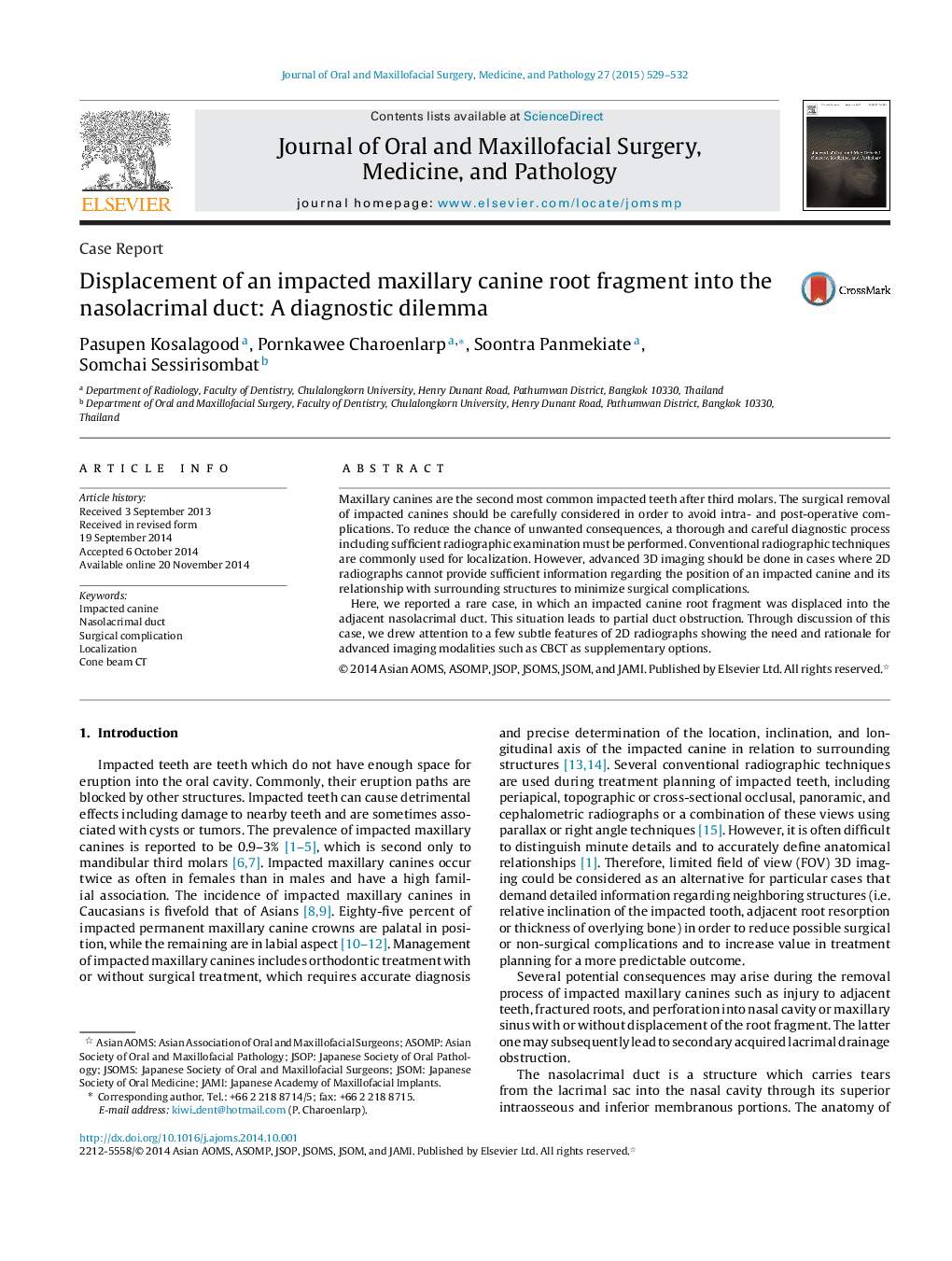| Article ID | Journal | Published Year | Pages | File Type |
|---|---|---|---|---|
| 3159783 | Journal of Oral and Maxillofacial Surgery, Medicine, and Pathology | 2015 | 4 Pages |
Maxillary canines are the second most common impacted teeth after third molars. The surgical removal of impacted canines should be carefully considered in order to avoid intra- and post-operative complications. To reduce the chance of unwanted consequences, a thorough and careful diagnostic process including sufficient radiographic examination must be performed. Conventional radiographic techniques are commonly used for localization. However, advanced 3D imaging should be done in cases where 2D radiographs cannot provide sufficient information regarding the position of an impacted canine and its relationship with surrounding structures to minimize surgical complications.Here, we reported a rare case, in which an impacted canine root fragment was displaced into the adjacent nasolacrimal duct. This situation leads to partial duct obstruction. Through discussion of this case, we drew attention to a few subtle features of 2D radiographs showing the need and rationale for advanced imaging modalities such as CBCT as supplementary options.
